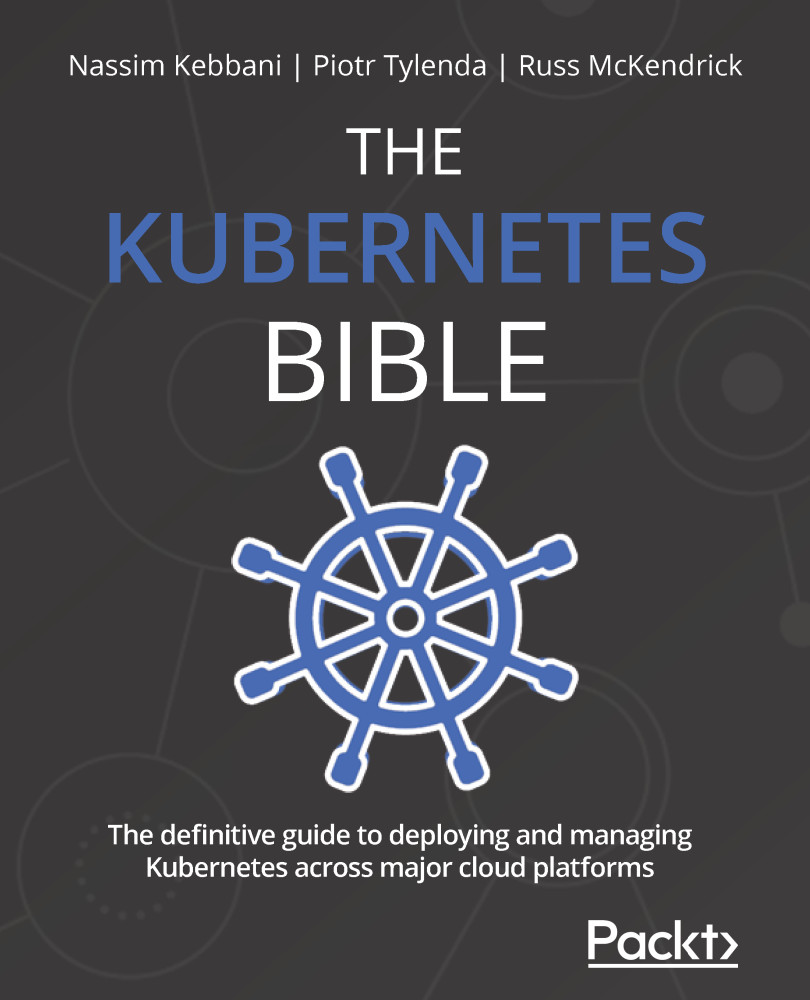-
Book Overview & Buying

-
Table Of Contents

The Kubernetes Bible
By :

The Kubernetes Bible
By:
Overview of this book
 Free Chapter
Free Chapter
 Sign In
Start Free Trial
Sign In
Start Free Trial

 Free Chapter
Free Chapter
Running complex applications on Kubernetes will require that you run not one but several containers in the same Pods. The strength of Kubernetes lies in its ability to create Pods made up of several containers: these Pods are capable of managing multiple containers at once. We will focus on those Pods in this chapter by studying the different aspects of hosting several containers in the same Pod, as well as having these different containers communicate with each other.
So far, we've only created Pods running a single container: those were the simplest forms of Pods, and you'll use them Pods to manage the simplest of applications. We also discovered how to update and delete them by running simple Create, Read, Update, Delete (CRUD) operations against those Pods using the kubectl command-line tool.
Besides mastering the basics of CRUD operations, you also learned how to access a running Pod inside a Kubernetes...
